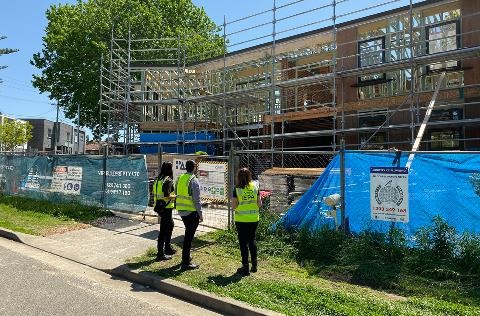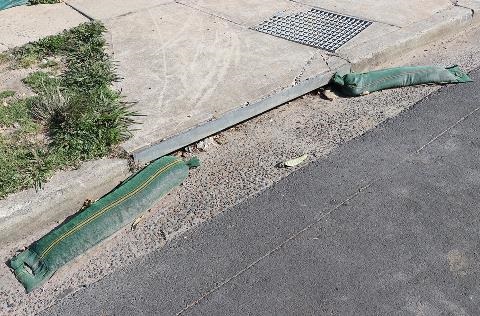Get the Site Right

Now in its eighth year, Get the Site Right is a joint taskforce between the Cooks River Alliance, Georges Riverkeeper, NSW Dept of Planning, Housing and Infrastructure (DPHI), NSW Environment Protection Authority (EPA), Parramatta River Catchment Group, Sydney Coastal Councils Group, WaterNSW, and councils across NSW.
Builders and developers are being urged to safeguard their construction materials from high wind and other strong weather events to prevent pollution of local waterways as this year’s Get the Site Right campaign kicks off on Wednesday 1 May.
As part of the month-long campaign, officers from the NSW EPA, DPHI, and more than 20 councils will participate in inspections for a one-day compliance blitz on Thursday 16 May.
Watch the latest "Get the Site Right" campaign video
The 2024 campaign’s focus is on pollution prevention through securing construction materials.
2023’s Get the Site Right blitz saw a 6% increase in compliance between the May and October campaigns and the taskforce is aiming for even higher levels of compliance this year.
NSW EPA Director Operations Adam Gilligan said that the loss of building materials such as roof sheeting or insulation padding is not only costly to the construction industry but can also have significant impacts on the environment.
“Construction materials washed or blown from construction sites can block stormwater drains, as well as impact the health of our waterways and marine life,” Mr Gilligan said.
“Builders and developers have a duty to ensure their sites have the proper controls in place to prevent pollution incidents.
“Environmental criminals will also now have a higher price to pay, thanks to recently passed stronger penalties, with on-the-spot fines for water pollution starting at $30,000 for companies.
“These new fines are even more reason for builders and developers to prevent pollution and do the right thing.”
What is erosion and sediment control?
Erosion and sediment control is used on building and construction sites to prevent soil, sand and other sediment from being washed off the site and into gutters, stormwater drains and waterways.
Good erosion and sediment control involves careful management of the site before, during and after construction, using a combination of control measures. These controls help to minimise site disturbance and trap sediment before it can wash away. They can also prevent the loss of stockpiles and improve building site conditions generally.

How does sediment runoff affect our environment?
Sediment runoff can impact our environment and waterways in many ways:
- Directly pollutes creeks, rivers, beaches and harbours, which affects swimming and other recreational activities in and around our waterways.
- Smothers aquatic plants and animals and destroys their habitat.
- Blocks stormwater drains and causes overflows and flooding.
- Erodes creek and river banks.
- Causes health and safety risks such as slippery roads and tripping hazards.
Why do I need an erosion and sediment control plan?
- You are legally obliged to install erosion and control measures on your site
- Many councils require you to submit an erosion and sediment control plan before work begins
- If activity on your site causes a pollution incident, you could receive fines of $8,000 to $15,000 for each incident
- Save money and downtime by having an organised site and preventing costly building supplies from being washed away during wet weather
- Reduce hazards and improve the health and safety for your workers and the community
- We all have a role to play in making our waterways clean and safe for everyone to enjoy
How to get your site right
If you’re building or renovating, here are a few ways you can help prevent sediment runoff from leaving your site and polluting our waterways:
- Leave as much vegetation on the site and street verge as possible during construction
- Establish a single, stabilised entry and exit point to prevent tracking sediment off the site
- Install sediment fencing correctly along the low side of the site, using geotextile material
- Divert stormwater around the work site
- Connect downpipes from the guttering to the stormwater drain as soon as the roof is installed
- Cover stockpiles from rain and wind
- Sweep the footpath and road every day and never hose sediment into the gutter or stormwater drain
More information
More information about the campaign and the importance of erosion and sediment control is available at:
www.ourlivingriver.com.au/getthesiteright
See a site that's not right?
Report pollution incidents, including poor erosion and sediment control, to your local council or the EPA’s 24/7 Environment Line on 131 555.